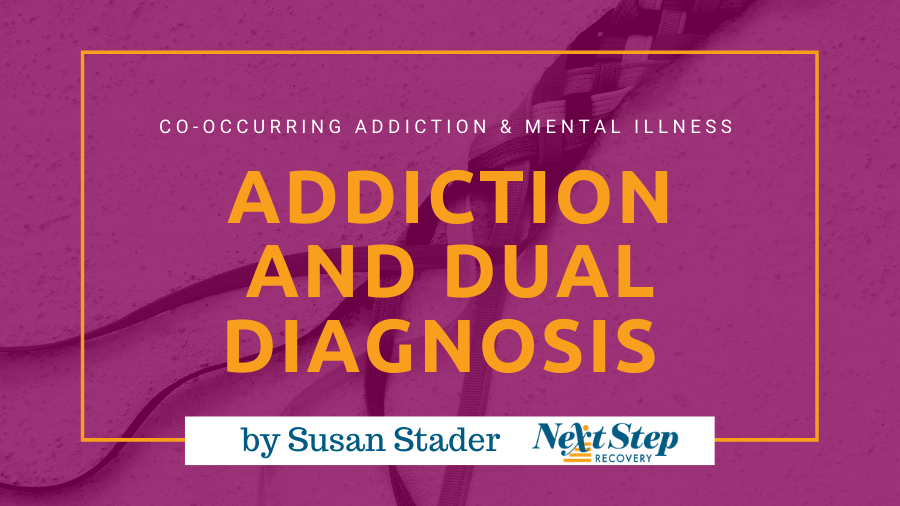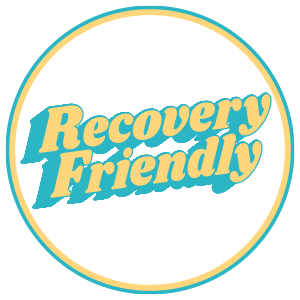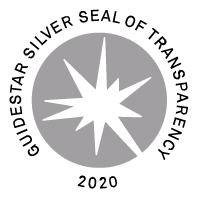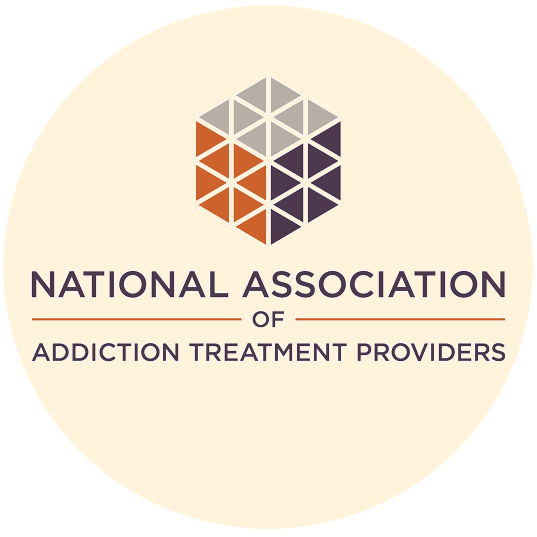Dual diagnosis programs treat addiction and mental disorders for a stable recovery.
Sobriety is a lifetime effort. For true recovery, individuals will have to treat their addiction and any traumas that may link to their addiction.
Dual diagnosis can reveal wounds that surround an addiction to ensure a lasting recovery.
What this article will cover:
- What is a dual diagnosis in addiction care?
- How is dual diagnosis in addictions different from other dual diagnoses?
- How does dual diagnosis happen?
- How is dual diagnosis treated?
- What should I know before starting dual diagnosis treatment?
- Should I choose an out-of-state dual diagnosis treatment program?
As usual, we will start you off with the basics.
What is Dual Diagnosis?
Dual diagnosis is a medical term that identifies two simultaneous disorders in a client. This condition is also known as co-occurring disorders (COD), dual pathology, or comorbidities. In addiction care, dual diagnosis refers to a client with a substance use disorder alongside a mental health disorder.
Dual diagnosis is a broad term that can include many health disorders. Generally, this gives individuals a more holistic care plan to treat all their connected illnesses.
In this article, we’ll discuss dual diagnosis in addiction care.
Dual diagnosis treatment can help individuals in addiction recovery if they:
- Are struggling to reduce or end their abuse of addictive substances.
- Have relapsed from previous addiction rehabilitation treatments.
- Already have a previous mental health disorder diagnosis.
- Suffer symptoms of chronic anxiety, hopelessness, guilt, or even physical pain.
Dual diagnosis in addictions allows each condition to gets its own treatment plan. This rehabilitates the addiction and any underlying traumas that may influence it.
Co-Occurring Disorders in Addictions vs Medical Dual Diagnosis
Before going deep on dual diagnosis, one should understand how the term is used.
Dual diagnosis in medicine including all types of physical and mental health conditions. The disorders may or may not connect to each other, like osteoporosis and insomnia.
Dual diagnosis in addictions refers to behavioral addiction alongside one or more mental health conditions. This is also known as treatment for co-occurring disorders (COD).
Addiction may be a direct or indirect symptom of underlying mental health issues. Likewise, addiction can exacerbate pre-existing mental illness.
Dual diagnosis helps clients see and confront this relationship to enter true recovery.
So, clients might receive an addiction dual diagnosis if they:
- Have a persistent addictive behavior that feels completely uncontrollable.
- Are challenged by any unresolved traumas from their past.
- Endure frequent feelings, thoughts, or beliefs that disrupt normal daily tasks.
Clients must receive special care for co-occurring disorders. They will detox and enter post-withdrawal sobriety before getting a proper diagnosis.
Dual Diagnosis in Addiction Care Explained
Addiction dual diagnosis aims to address all conditions that can cause a relapse.
Once diagnosed, individuals need an integrated treatment plan. The program should tend to each diagnosis and the connection between them.
Clients may have had separate treatment for one or more conditions in the past. Modern programs focus on disorder interaction to resolve and prevent issues.
Since co-occurring disorders are complex, we’ll break down how it works.
How Dual Diagnosis Disorders Occur
At its core, dual diagnosis in addiction is composed of the following:
- Substance use disorder (SUD) or other forms of addiction
- Mental health disorder
Clients should know this condition is not a moral or emotional weakness. Trauma affects everyone in unique ways and addiction is one of many coping methods.
But co-occurring disorders can develop from more than just coping with trauma.
Both addiction and mental illness may result from any blend of:
- Genetically-abnormal brain
- Brain damage
- Brain chemical imbalance
Common causes can include physical and/or emotional traumas, environmental toxins, or heredity. When isolated, a single disorder is easier to treat.
Interaction between these disorders is when dual diagnosis becomes a challenge.
Some theories for connected dual pathology include:
- Addiction can give rise to mental health disorders. Substance abuse can intensify a client’s existing risks for mental disorders. The mix of genetics and environment may predispose a client to disorders that an addiction reinforces.
- Self-medication via addiction can make a mental health disorder worse. Individuals with a mental disorder might cope through addictive behaviors. However, abuse of drugs or alcohol can damage or imbalance their brain and worsen the original mental diagnosis. This cycle is very hard to break.
- Mental health disorders can be agitated by substance abuse. Even if an individual does not have an addiction, substance use can be dangerous during emotional lows of a mental illness. Casual use can turn into a coping addiction as emotions and thoughts become further off-balance.
Dual diagnosis requires carefully-planned treatment system of behavioral rehab, medication, and detoxification. If each disorder is not treated, relapse is likely.
Common Disorders in Dual Diagnosis
Dual diagnosis is complicated further by the wide scope of disorders clients might have.
Mental health conditions in dual diagnosis may include:
- Mania
- Depression
- Attention-deficit hyperactive disorder (ADHD)
- Bipolar Disorder
- Borderline Personality Disorder (BPD)
- Generalized Anxiety Disorder (GAD)
- Obsessive-Compulsive Disorder (OCD)
- Post-traumatic stress disorder (PTSD)
- Schizophrenia
- Panic disorder
- Dementia
Addiction disorders in dual diagnosis may include:
- Substance use disorders (SUD)
- Eating disorders
- Pathological gambling
- Sex addiction
Clients who are appropriately diagnosed may proceed with a clear course of treatment. Of course, identifying symptoms properly is a challenge in itself.
Symptoms of Dual Diagnosis in Addictions
Addiction dual diagnosis symptoms vary due to the endless combinations of possible disorders.
With immediate symptoms alone, a diagnosis might be challenging or impossible.
Some addiction disorders have symptom overlap with mental illness. This means misdiagnosis of a mental disorder is entirely possible when addiction is present.
Still, some symptoms may help clients decide to seek a professional diagnosis.
Clients might have a dual diagnosis if they show any cautionary signs:
- Regular substance use, especially when feeling undesirable emotions
- Unstable emotional highs and lows
- Chronic feelings of hopelessness, anxiety, or numbness
- Feelings of guilt, defensiveness, or powerlessness around your substance use
- Neglect/absence from daily tasks, social life, or connections to loved ones
- Inability to stop some behaviors due to extreme physical or mental discomfort
Despite obstacles, treatment centers have found ways to reach a proper diagnosis.
Risk of misdiagnosis is lower if a client goes through full detox and post-withdrawal first. Mental issues are best assessed once the addiction has a smaller role.
As a result, most clients will be in treatment before getting proper dual diagnosis.
How Dual Diagnosis Treatment Relates to the Continuum of Addiction Care
Dual diagnosis treatment is part of a client’s entire recovery, even into independence.
The continuum of addiction care links every recovery intervention in a seamless rehab network. An individual uses the CoC to prevent relapse between programs.
The stages in the continuum of care for addictions are:
- Level 0.5: early intervention services
- Level 1: outpatient services
- Level 2: intensive outpatient or partial hospitalization services
- Level 3: residential or inpatient treatment services
- Level 4: medically managed intensive inpatient treatment services
Intake for dual pathology candidates will begin for most clients in intensive services of level 2 or higher. This is usually to protect the client and those around them.
Dual diagnosis usually follows an addiction diagnosis and comes post-detoxification. Treatments for the disorders are threaded all along the continuum, from detox onward.
Detoxification is essential before any form of therapy, especially in dual diagnosis.
Once sober, individuals will be assessed for any mental illness beyond their addiction. It is at this point that they may start therapies for each of their diagnoses.
At any point of recovery, relapse or struggles may lead to a return to treatments.
Treatment Types Used for Dual Diagnosis
CoC recovery programs include many varied treatment types for dual diagnosis care.
Every client is expected to go through some form of detoxification. Medication programs may also be advised to bring a client’s biology back in balance.
Detox and medication can take place at the onset of many treatment programs.
Some common dual pathology treatment program types include:
- Inpatient Recovery Services for highly-unstable clients. They may need medical monitoring, safety precautions, or are otherwise ill-equipped to be under anything less than 24/7 care.
- Intensive Outpatient Services for clients that need structured, scheduled treatments. They may be stable enough to live off-site and continue their normal life. The services are offered on-site at an IOP treatment center.
- Outpatient Support Housing for clients who need social support and relocation from their homes. They may want to escape known at-home triggers during treatments. These may include sober living homes.
In any given program, these are some common treatment methods:
- Psychotherapy like CBT, which reforms behaviors via changing thoughts and beliefs. DBT is especially helpful if clients have emotional resistance to change.
- Alternative therapies like adventure therapy and equine therapy. These therapies give clients new perspectives on their struggles.
- Support groups such as 12 steps offer a peer-based community. These groups help clients build healthy social lives and get accountability.
All of these units function together to intake clients and step them down appropriately. Treatment plans are customized to each client’s specific needs.
What to Know Before Starting Dual Diagnosis Treatment
Clients must be aware of what to expect in a dual diagnosis program before starting.
Protective care usually runs alongside the detox stage to deter any risks to safety. Dual diagnosis clients are at an especially high risk of harm to themselves or others.
Inpatient or residential care is used for most clients meaning the client will need to be prepped for living away from home for a while. The client might need to set up accommodations for children or anyone for which they are a primary caretaker.
Commitment is essential to full recovery from co-occurring disorders. Confronting the challenges of multiple disorders will be very difficult. Being willing to accept help, confide, and learn will determine if clients make lasting progress in treatment.
Confidentiality might not apply if client is at risk for harming themselves, harming others, or cannot care for themselves in a safe way. If their diagnosis carries safety risks, providers may need to disclose information for the client’s own protection.
How to Choose a Dual Diagnosis Treatment Program
Care for an addiction dual diagnosis is best done under an integrated treatment.
Older models excluded addiction clients from mental services due to the difficulty of treatment. This approach increased the risk of relapse or incomplete recovery.
Integrated intervention is recommended by SAMHSA as the ideal treatment for co-occurring disorders. This means all of the client’s programs and providers collaborate to care using compatible methods. This ensures that treatment is consistent.
Before starting, clients should be sure all their recovery treatments work in tandem.
Finding an integrated program for specific diagnoses may require out-of-state care.
Benefits of an Out-of-State Dual Diagnosis Treatment Program
Dual diagnosis programs out-of-state may offer more than just true integrated care.
Clients in out-of-state care may benefit from:
- Relocating into an environment free of familiar, at-home addiction triggers.
- Face-to-face treatment that may not be offered in online care.
- Continuum-integrated service programs like IOP with Sober Living.
Clients may have to go out-of-state to find a proper integrated dual diagnosis program. Most clients will likely need residential care of some form.
Remember, the Family and Medical Leave Act (FMLA) offers legally-protected unpaid leave. This goes of up to 12 work weeks, even for addiction treatment.
Primary caretakers for loved ones might opt to choose local-only services. However, this is only if they are not recommended to residential or hospitalization services.
Takeaways on Dual Diagnosis
In summary, dual diagnosis is an important introduction to a lifetime of sobriety.
By now, you’ve likely learned that:
- Dual diagnosis defines two co-occurring disorders that include addiction.
- Addiction dual diagnosis is an addiction and a mental health condition.
- Co-occurring disorders may result from mental dysfunction or damage.
- Treatment involves an integrated plan involving medical and mental services.
- Dual diagnosis clients will likely commit to temporary relocation for treatment.
- Out-of-state care is a reliable way to find treatment for unique dual diagnoses.
Ultimately, dual diagnosis can be the key to breaking out of the addiction cycle.
Know someone who could benefit from learning about dual diagnosis for addiction? Please like and share this post with them. Or, leave your questions or comments about the co-occurring disorders below! We’re always looking for ways to keep the conversation about recovery going. Education is one of the most powerful tools we have to fight addiction.







